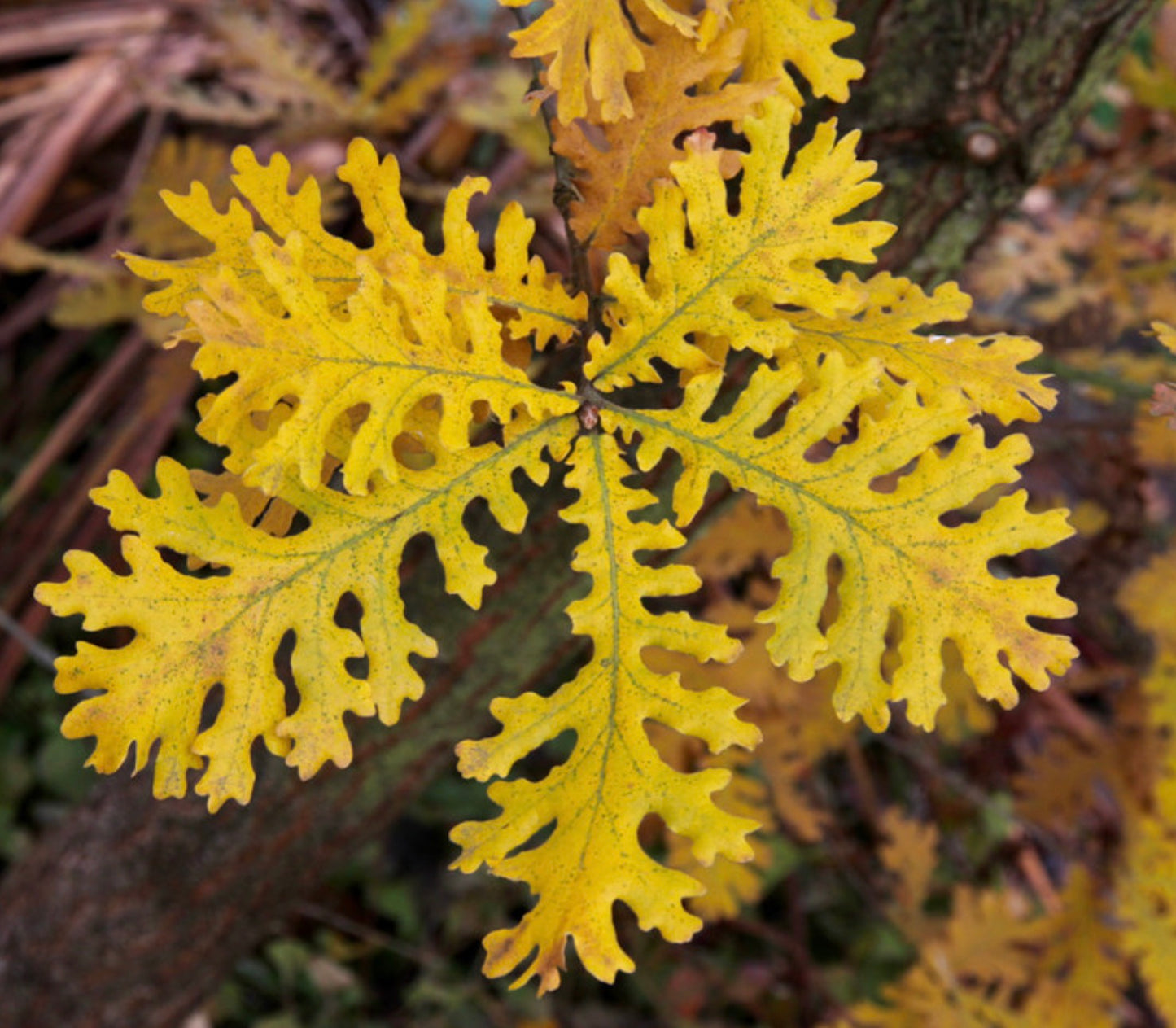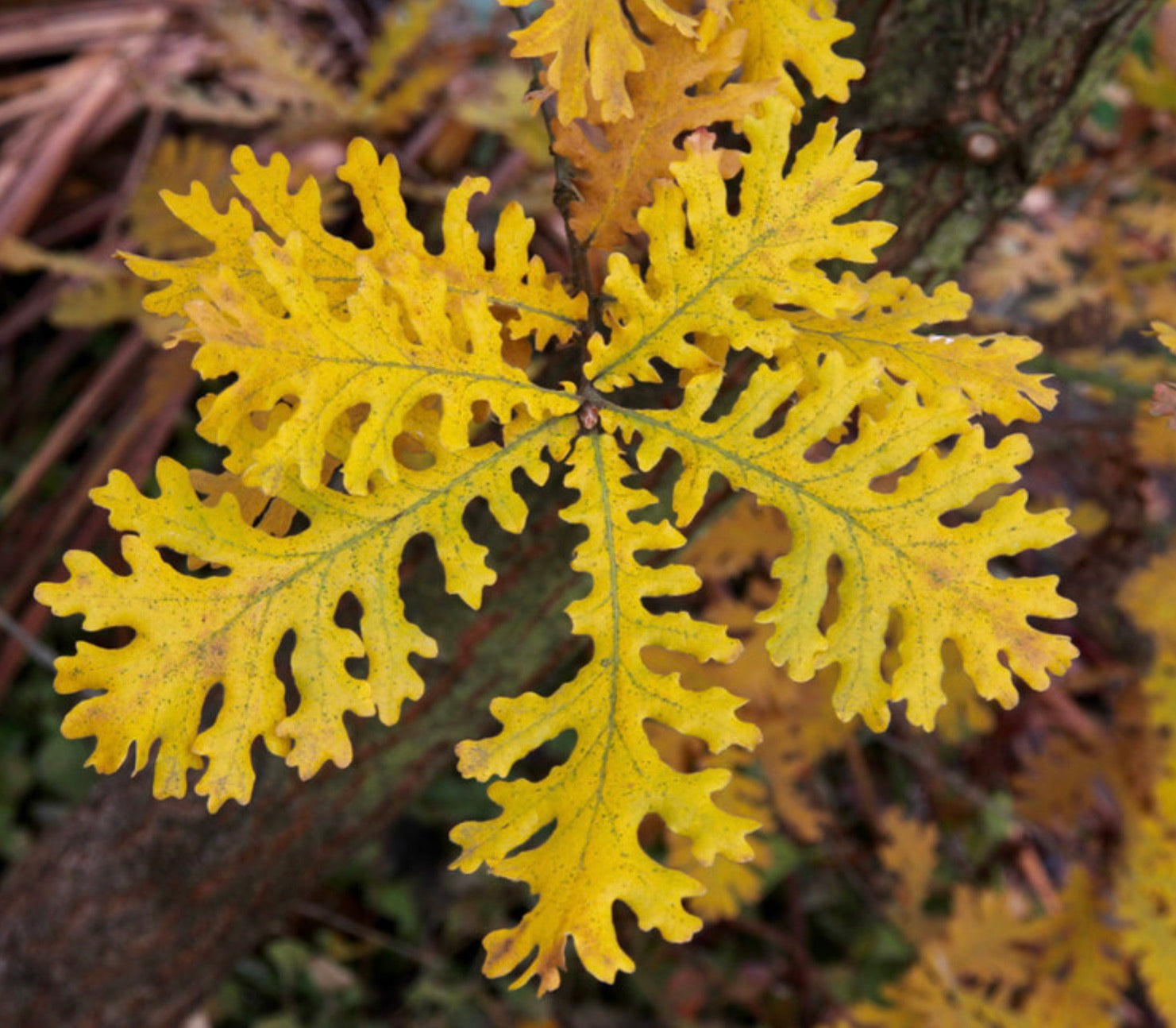Quercus frainetto
Quercus frainetto
Couldn't load pickup availability
Product Description
Quercus frainetto, known as Hungarian oak or Italian oak, is a deciduous tree species native to southeastern Europe, including regions of Italy, Hungary, and the Balkans. It is renowned for its majestic stature, handsome foliage, and adaptability to various environmental conditions.
Appearance:
- Size: Quercus frainetto typically grows to a height of 20-30 meters (65-100 feet), occasionally reaching up to 35 meters (115 feet).
- Leaves: The leaves are alternate, simple, and oval-shaped with deep, rounded lobes. They are dark green and glossy on the upper surface, turning a rich golden-yellow in autumn before falling.
- Bark: The bark is smooth and grey when young, becoming furrowed and ridged with age, often developing a distinctive flaky texture.
- Acorns: The tree produces acorns that are large and spherical, usually around 2-4 cm (0.8-1.6 inches) in diameter, and serve as a valuable food source for wildlife.
Habitat and Range:
- Quercus frainetto is indigenous to southeastern Europe, where it thrives in a variety of habitats, including mixed deciduous forests, woodlands, and open landscapes.
- It is well-suited to a Mediterranean climate but can also tolerate colder temperatures and periodic drought.
Cultivation:
1. Location:
- Plant Quercus frainetto in a location that receives full sun to partial shade.
- Ensure adequate spacing, as the tree can spread widely with age.
2. Soil:
- Provide well-drained, fertile soil for optimal growth. Quercus frainetto prefers loamy or clay soils but can adapt to various soil types.
- Ensure the soil pH is neutral to slightly acidic.
3. Watering:
- Water young trees regularly, especially during dry spells, to promote healthy root development.
- Once established, Hungarian oak is relatively drought-tolerant but benefits from occasional watering during prolonged dry periods.
4. Pruning:
- Prune Quercus frainetto sparingly, mainly to remove dead, damaged, or crossing branches.
- Pruning is best done during the dormant season to minimize stress on the tree.
5. Fertilization:
- Apply a balanced fertilizer in early spring to promote vigorous growth, particularly for young trees or those growing in nutrient-poor soils.
6. Pest and Disease Management:
- Quercus frainetto is generally resistant to pests and diseases, but occasional issues such as oak wilt or powdery mildew may occur.
- Monitor the tree regularly for signs of pests or diseases, and take appropriate action if necessary.
7. Mulching:
- Apply a layer of organic mulch around the base of the tree to conserve soil moisture, suppress weed growth, and improve soil structure.
- Keep the mulch a few inches away from the trunk to prevent moisture-related issues.
Quercus frainetto, or Hungarian oak, is a magnificent tree species with ornamental value and ecological significance. By following these cultivation tips, you can successfully grow and maintain Hungarian oak trees, adding beauty and biodiversity to your landscape.
IMPORTANT: Please be aware that picture 1 show adult plant not for sale, the offer is for a plant in the dimension indicated product description.
Please be aware that most plants change across seasons. For example, some of them will naturally lose leaves or change in colour during colder months. Do not hesitate to contact us for further informations about the plants of your interest.
Cultivation
Cultivation
Info and Disclaimers
Info and Disclaimers
Plant height:
Pot diameter:
Picture taken on:


